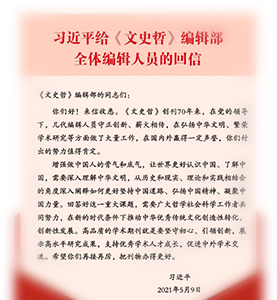汉代列仙图考
姜 生
汉墓画像中保存着现知最早最可靠的汉代列仙图谱形态。汉画所见不同时代历史(传说)人物共事一堂的“不合理”情景,以及大量超出世俗经验的奇观异景,都暗示了图像所指示的空间对世俗时空秩序的超越特征。以武氏祠东壁、西壁及后壁为中心,综合考察各类画像石图像可以发现,汉代墓葬画像背后实际隐含着一套宗教的价值评判标准:帝王、贤相、能将及刺客类图像,反映了“自三代以来贤圣及英雄者为仙”的成仙标准;忠臣、孝子及列女类图像则表明,在汉代,生前为忠、孝、节、义之典范者亦得死后成仙。汉画中内在有序的人物图像内容应作为汉代仙传谱系来看待。神学化的儒家道德伦理,重武尚侠的社会风尚与历史上长期积淀的神仙思想相结合,乃是汉代“仙谱”所据以形成的思想基础。汉画所存仙鬼谱系乃汉代宗教信仰结构之反映,亦伴随汉晋价值观之遽变而发生转变。将汉墓画像系统与道书文献相互印证研究,不仅可在一定程度上还原汉代“仙谱”的基本面貌,更可揭示当时的成仙标准,这对于研究汉代宗教形态和初期道教的起源问题将具有钩沉起蔽的重大意义。
A Study of the Portraits of Immortals in the Han Dynasty
Jiang Sheng
There are earliest and most reliable pedigree of immortals as known preserved on the stone reliefs in tombs of the Han Dynasty. The “irrational” scene that the historical or legendary figures of different times co-existing in one place, and numerous strange wonders exceeding secular experience, all suggest the transcendent characteristics of the space indicated by the images to the secular order of time and space. Centered on the east, west, and back walls of the Wu Ancestral Hall, and through a comprehensive survey of all kinds of images on the stone reliefs, it could be found that there actually implies a set of religious criterion for value in those images. The kind of images of emperors, wise prime ministers, capable generals, and assassins reflected the standard of “sages and heroes becoming immortals since the Xia, Shang, and Zhou Dynasties; and the kind of images of loyalist, filial son, and virtuous lady also showed that in the Han Dynasty, the paragons of loyalty, filial piety, chastity and righteousness could become immortals after death. The orderly images should be regarded as the pedigree of immortals of the Han Dynasty. The theological Confucian ethics, the social fashion of valuing martial arts, and long accumulated thought of immortals formed the ideological foundation of the pedigree of immortals in the Han Dynasty. The pedigree of immortals and ghosts preserved on the stone reliefs reflected the structure of religious belief in the Han Dynasty, and transformed with the great change during the Han and Jin Dynasties. The research combining the portraits in tombs of the Han Dynasty and the Taoist literature could not only restore the general visage of the pedigree of immortals in the Han Dynasty, but also reveal the standard of becoming immortals at that time, which was quite significant to the studies of the religious form of the Han Dynasty and the origin of early Taoism.


